What Your Skin Says About Your Health Slideshow


Your Skin: A Window to Your Health
Your skin can be a window to your underlying health, says Wake Forest University's Joseph Jorizzo, MD, one of the experts who literally wrote the book on skin signs of internal disease. Many underlying health conditions -- some very serious -- first appear as skin problems.
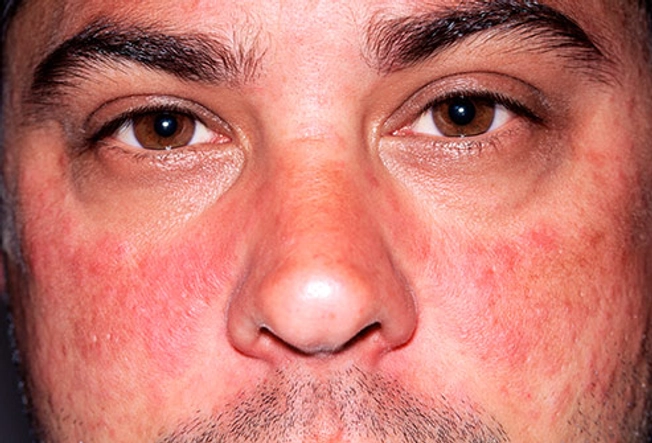
Butterfly Rash
The “butterfly” rash on the face of this man is associated with systemic lupus erythematosus (SLE), one form of the autoimmune disease lupus. The rash appears on both cheeks and across the bridge of the nose. Known as a connective tissue disease, with lupus the immune system sees parts of the body as foreign tissue and attacks it. Skin, joints and kidneys are most often affected. It’s not known what causes SLE but there is no known cure, and the condition can be chronic, resulting in fevers and a fatigue. SLE can lead to fatal kidney failure.
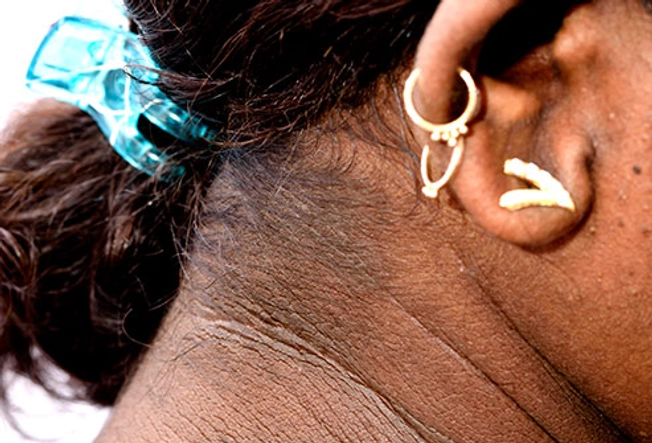
Velvet Plaques
Acanthosis nigricans. Also called Velvety plaques, this thickening of the outer layer of skin can develop in the folds of the neck, armpit, and groin, causing a hyperpigmentation of the skin. The color can range from brown to almost black. It can show up during childhood or adulthood and is associated with diabetes or may indicate an internal malignancy.
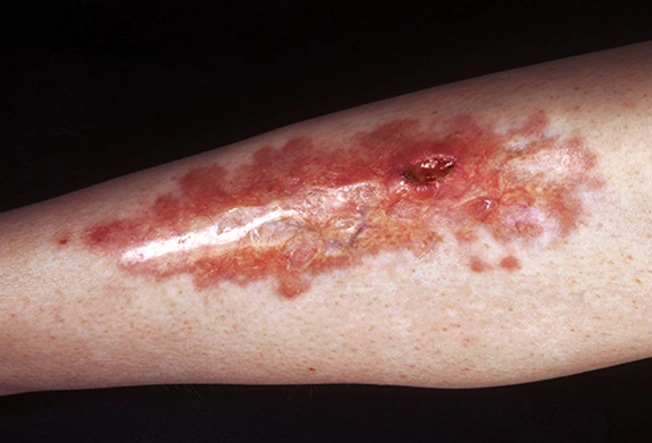
Leg Plaque: Red on Edge, Gold in Center
Necrobiosis lipoidica is a skin condition related to diabetes. Reddish brown areas appear on legs and arms and can ulcerate, leaving open wounds.
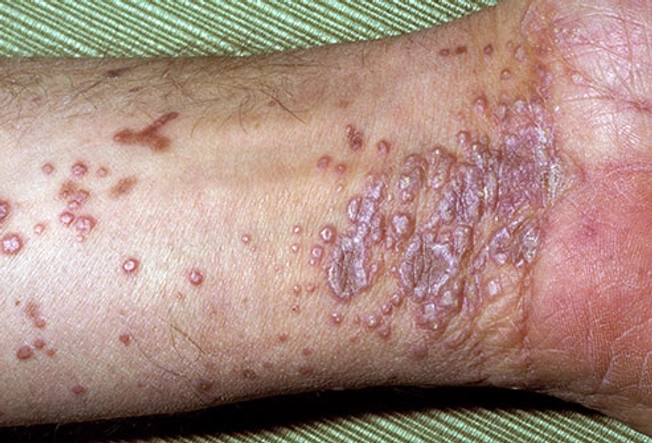
Itchy, Violet Bumps on Wrist
These reddish-purple, flat topped bumps are a rash called lichen planus. It usually appears on the wrists or ankles but may be in the mouth or on the lower back, neck, legs, and genitals. It can itch like crazy. It’s unclear what causes it but to be safe, get liver tests. It could be linked to having hepatitis C.
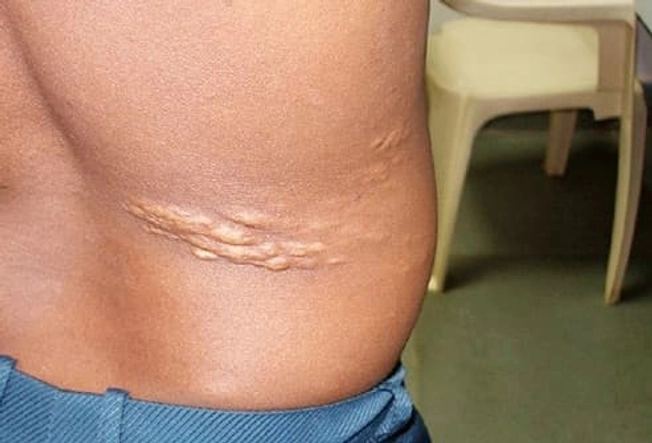
Flesh Colored, Orange-Peel Patches on Back
Shagreen patches are flesh-colored lesions on the lower back that have the texture of an orange peel. They often occur with other skin signs: red or brown acne-like bumps spreading across the cheeks and nose; and ash-leaf spots of under-pigmented skin, most often on the trunk, that are oval at one end and pointy at the other. These are signs of a rare genetic disease called tuberous sclerosis that causes benign tumors to grow in the brain and other vital organs.
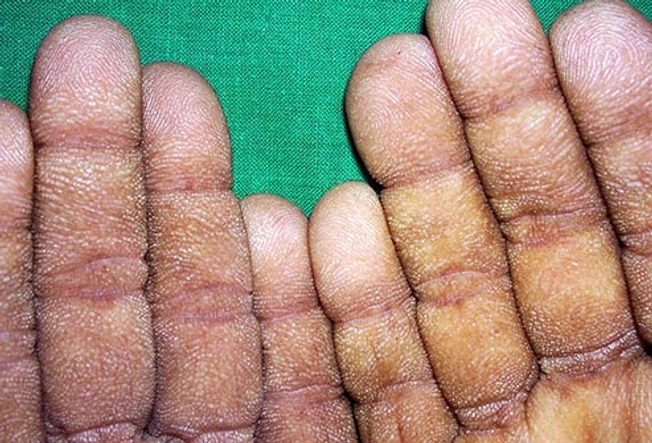
Tripe Palms
Tripe palms is a rare condition that causes the skin on the palms of the hands and soles of the feet to become thick and velvety white. The texture of the skin looks like boiled tripe. Also called acanthosis palmaris., 95% of the time, it is linked to cancer. If only the palms are involved, it is likely lung cancer.
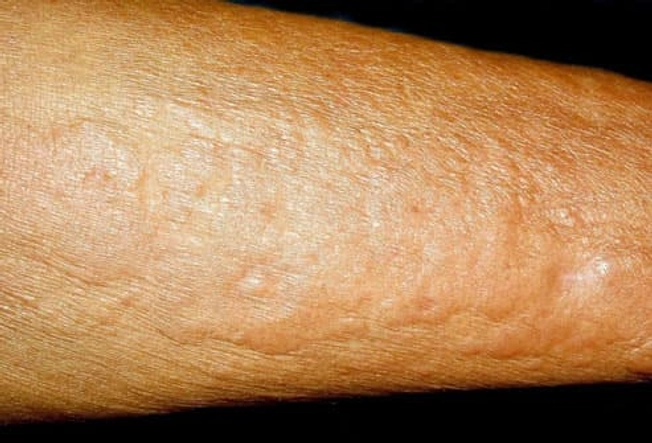
'Wooden' Hands and Feet
First described in 1997, nephrogenic systemic fibrosis starts as a brown discoloration and indentation of the lower arms and legs. Very soon, the hands and feet become brown and like wood. Sometimes there's also a small yellow spot in the eye. Researchers have found that the dye used during MRI triggers this condition in some people with kidney disease.
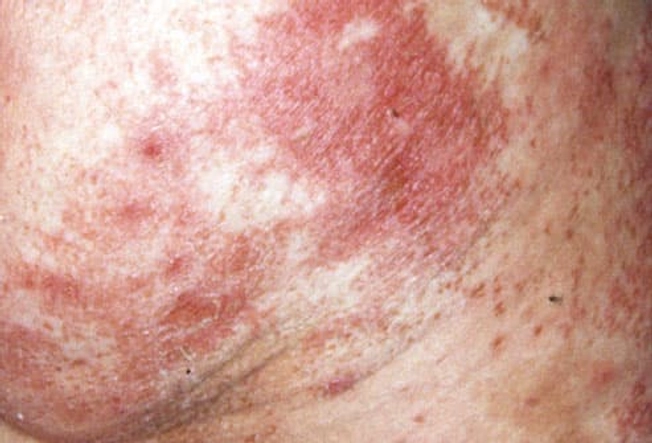
Scaly Rash on Buttocks, Red Tongue
Fortunately, necrolytic migratory erythema is pretty rare. It's a red, scaly rash, sometimes with small erosions of the skin, more often seen in elderly people. It tends to start in the fold of the buttocks or palms but can be elsewhere on the body. A bright red, painful tongue is common. The condition usually signals a pancreatic tumor, usually a glucogonoma.
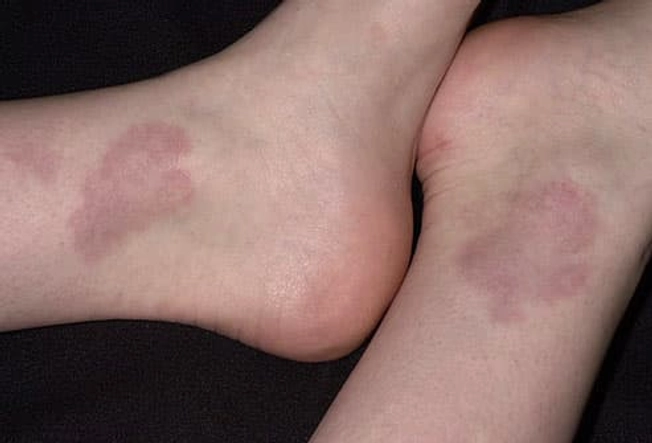
Not All Skin Conditions Scary
Most skin problems do not indicate that anything else is wrong with you. For example, granuloma annulare is raised, reddish or flesh-colored bumps forming ring patterns that can be found on the hands and feet. They usually go away within two years and don't mean anything is wrong with you. If it is more widespread, then it may last longer.